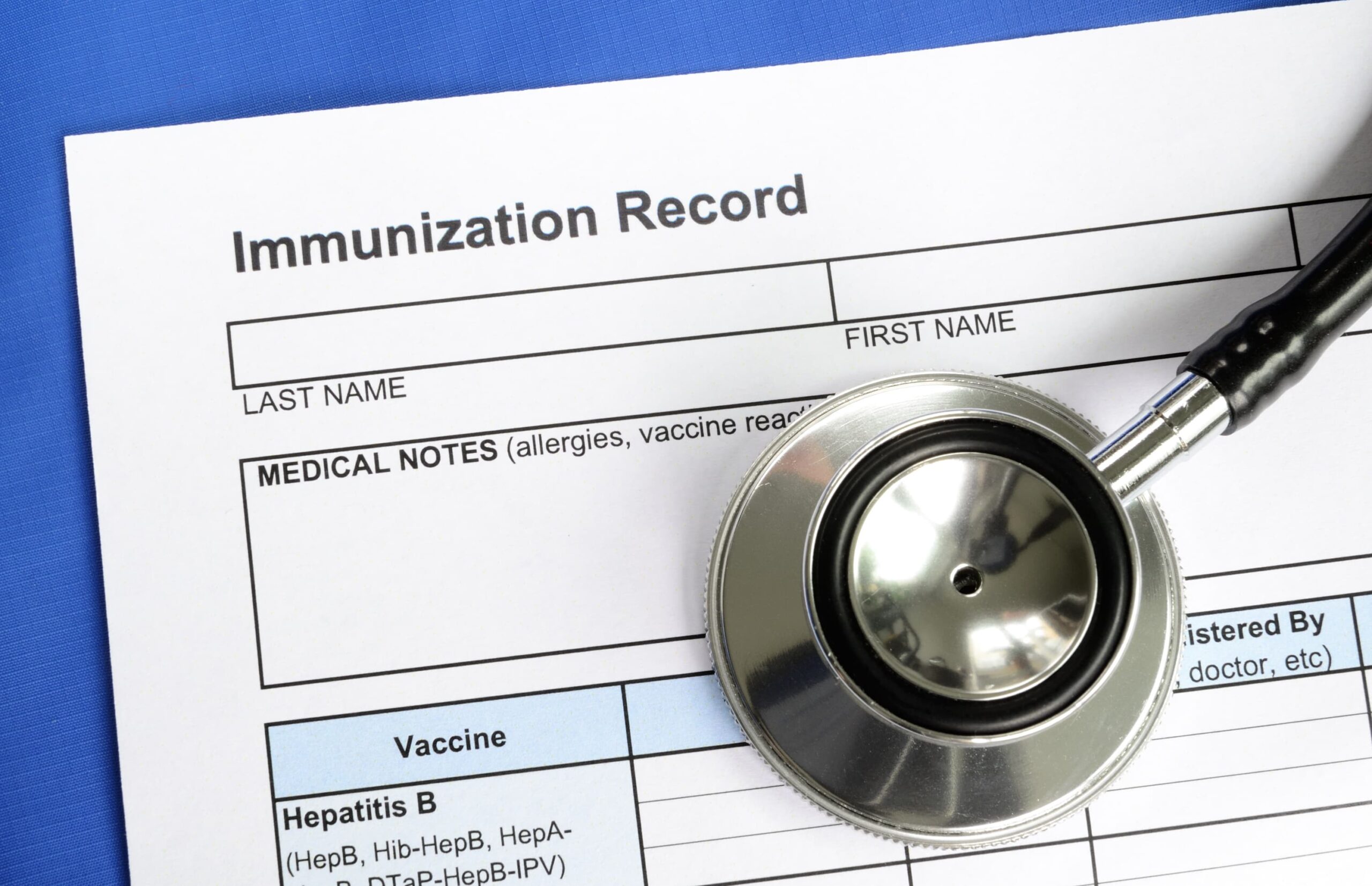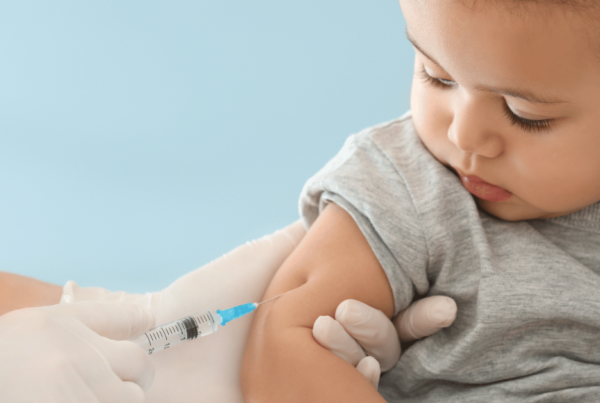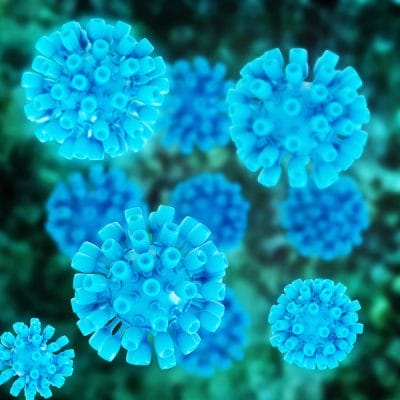- What is Polio?
- How is Polio Contracted?
- Polio Symptoms
- Where in the World is Polio?
- When is the Polio Vaccine Given?
- Efficacy of the Polio Vaccine
- Ingredients in the Injected Polio Vaccines
- Polio Vaccine FDA Package Inserts
- Controversy and the Polio Vaccine
- Polio Vaccine Reactions
- Who Should Not Get The Polio Vaccine?
- The Polio Vaccine and The Bottom Line
What is Polio?
Polio is a contagious disease caused by an intestinal virus that can attack the nerve cells of the brain and spinal cord, causing muscle weakness and paralysis. If the virus attacks the part of the spinal cord that controls respiration, death can occur. Most cases are transmitted like the common cold or intestinal flu. Most people who acquire it don’t show any symptoms. Some have a minor sore throat and fever, but they don’t know they have the polio virus, and therefore these cases pass without treatment (1).
There is no cure for polio; treatment focuses on managing symptoms and preventing complications. Mild to moderate cases are treated like any other viral illness with rest, fluids, and pain management (e.g. acetaminophen or ibuprofen). For more severe cases, supportive care may include pain management, physical therapy, respiratory support (e.g. ventilators) and assistive devices, like wheelchairs, for long-term muscle weakness.
How is Polio Contracted?
Wild Polio (WPV) can spread through contact with contaminated feces (baby exploring world through hands and mouth; changing an infected baby’s diapers), through airborne droplets in food, or in water. The virus enters the body through the nose or mouth, then travels to the intestines where it incubates. It then enters the bloodstream where “anti-polio” antibodies are produced. In most cases, this stops progression of the virus and the individual gains permanent immunity against the disease (2). Muscular paralysis has been estimated to occur in 1 of every 1,000 people who contract the disease (3).
Vaccine-derived Polio Virus (VDPV) is contracted the same way that wild polio is contracted, only the source of the virus comes from the oral polio vaccine (OPV). The oral polio vaccine is able to transmit polio because it is a live virus vaccine. The inactivated polio vaccine (IPV) – the one used in the United States – is not able to cause polio. Learn more about vaccine-derived polio: How Do Vaccines Cause Polio?
Polio Symptoms
MILD
Approximately 72% of persons infected with polio will have no symptoms (lifetime immunity thereafter).
MODERATE
About 24% of infected persons have minor symptoms, such as fever, fatigue, nausea, headache, flu-like symptoms, stiffness in the neck and back, and pain in the limbs, which often resolve completely (lifetime immunity thereafter).
Nonparalytic aseptic meningitis occurs in 1% to 5% of polio infections in children and typically presents with neck, back, or leg stiffness after a few days of symptoms resembling a mild illness. Other symptoms may include abnormal sensations like pain in the limbs, back, or neck, as well as headache and vomiting. These symptoms usually last 2 to 10 days and are followed by full recovery (1).
SEVERE
Fewer than 1% of polio cases result in permanent paralysis of the limbs (usually the legs). Of those paralyzed, 5-10% die when the paralysis strikes the respiratory muscles. The death rate increases with increasing age.
Where in the World is Polio?
Polio is considered eradicated in the United States. However, a 2022 case of polio reminds us that it is present in other parts of the world and may return (4).
If you have not vaccinated your child(ren) against polio and plan to travel out of the United States, or if you are curious about polio outbreaks today, the Global Polio Eradication Initiative has a website with weekly statistics of polio outbreaks, both wild polio and vaccine-derived polio cases.
When is the Polio Vaccine Given?
According to the CDC schedule, the polio vaccine is given at 2 months, 4 months, 18 months, and 5 years.
For more information, please see Vaccine Schedules.
Efficacy of the Polio Vaccine
- 90%+ immune after 2 doses
- 99% immune after 3 doses
- Duration of immunity is not known with certainty, though probably lifelong
Ingredients in the Injected Polio Vaccines
Below is an overview of the components found in different IPV products.
- Inactivated poliovirus types 1, 2, and 3
- 2-phenoxyethanol (preservative)
- Formaldehyde (used in the inactivation process)
- Residual antibiotics: neomycin, streptomycin, and polymyxin B (trace amounts from manufacturing)
- Calf bovine serum albumin (trace amounts from the growth medium)
- M-199 medium (a solution containing amino acids, mineral salts, and vitamins used during production)
- Combines DTaP (diphtheria, tetanus, acellular pertussis) and IPV
- Diphtheria and tetanus toxoids
- Acellular pertussis antigens
- Inactivated poliovirus types 1, 2, and 3
- Aluminum hydroxide (adjuvant)
- 2-phenoxyethanol (preservative)
- Residual formaldehyde and glutaraldehyde (from manufacturing)
- Polysorbate 80
- Neomycin and polymyxin B sulfate (trace amounts)
3. Pediarix (GlaxoSmithKline):
- Combines DTaP (diphtheria, tetanus, acellular pertussis), hepatitis B, and IPV
- Diphtheria and tetanus toxoids
- Acellular pertussis antigens
- Inactivated poliovirus types 1, 2, and 3
- Hepatitis B Surface Antigen (HBsAg)
- Aluminum phosphate (adjuvant)
- Polysorbate 80
- Sucrose
- Formaldehyde (residual)
- Glutaraldehyde (residual)
- Bovine serum albumin (residual)
- 2-Phenoxyethanol (3.3 mg; 0.6% v/v, not as a preservative)
- Neomycin (trace amounts
- Polymyxin B sulfate (trace amounts)
4. Quadracel (Sanofi Pasteur):
- Combines DTaP and IPV
- Diphtheria and tetanus toxoids
- Acellular pertussis antigens
- Inactivated poliovirus types 1, 2, and 3
- Aluminum phosphate (adjuvant)
- 2-phenoxyethanol (preservative)
- Residual formaldehyde and glutaraldehyde (from manufacturing)
- Polysorbate 80
- Residual antibiotics: neomycin, streptomycin, and polymyxin B (trace amounts)
- Combines diphtheria, tetanus, pertussis, inactivated poliovirus (IPV), and Haemophilus influenzae type b (Hib).
- Diphtheria & tetanus toxoids
- Acellular pertussis antigens
- Inactivated poliovirus (types 1, 2, and 3)
- Haemophilus influenzae type b (Hib) PRP-T (polyribosylribitol phosphate conjugated to tetanus toxoid)
- Aluminum phosphate (adjuvant)
- 2-phenoxyethanol (preservative)
- Polysorbate 80 (stabilizer)
- Formaldehyde (trace amounts, used during manufacturing)
- Triton X-100 (trace amounts, used during manufacturing)
- Sucrose (stabilizer for Hib component)
- Residual antibiotics: Neomycin and polymyxin B (trace amounts, used during manufacturing)
6. Vaxelis (Sanofi Pasteur & Merck – MSP Vaccine Company):
- Combines diphtheria, tetanus, acellular pertussis, inactivated poliovirus (IPV), Haemophilus influenzae type b (Hib), and hepatitis B
- Diphtheria & tetanus toxoids
- Acellular pertussis antigens
- Inactivated poliovirus (types 1, 2, and 3)
- Haemophilus influenzae type b (Hib) PRP-T (polyribosylribitol phosphate conjugated to tetanus toxoid)
- Hepatitis B surface antigen (HBsAg, recombinant)
- Aluminum phosphate (adjuvant)
- Formaldehyde (trace amounts, used during manufacturing)
- Polysorbate 80 (stabilizer)
- Sucrose (stabilizer for Hib component)
- Residual antibiotics: Neomycin and polymyxin B (trace amounts, used during manufacturing)
- It’s important to note that vaccine formulations can change over time, and additional combination vaccines containing IPV may become available. For the most accurate and up-to-date information, consulting the specific vaccine’s package insert or the manufacturer’s official documentation is recommended. For a complete list of current vaccines in use in the United States, see this webpage: Vaccines Licensed for Use in the United States.
CONTROVERSIAL INGREDIENTS IN THE POLIO VACCINE
- Calf bovine serum albumin
- Glutaraldehyde
- Formaldehyde and 2-phenoxyethanol
- Monkey kidney cells*
- MRC-5 cells derived from human embryonic cells* (prior to 2019)
*Polio vaccines use Vero cell lines that are derived from monkey kidney cells that are thoroughly tested for contaminants including viruses. Previously, Pentacel and Quadracel used MRC-5 cells derived from a human embryo; however, the formulations were changed in 2019 and now contain Vero cells instead of MRC-5 cells.
If you would like specific information, including studies, regarding each ingredient, see: Vaccine Ingredients.
Polio Vaccine FDA Package Inserts
- IPOL (Sanofi Pasteur)
- Pentacel (Sanofi Pasteur)
- Pediarix (GlaxoSmithKline)
- Kinrix (GlaxoSmithKline)
- Quadracel (Sanofi Pasteur)
- Vaxelis (Sanofi Pasteur Merck)
Controversy and the Polio Vaccine
Polio has been a very successful vaccine; however, its history is not without controversy. Questions surrounding the vaccine’s production, unintended consequences, and broader implications have fueled debates over the years. Below are some of the most notable controversies tied to the polio vaccine.
1. Vaccine-Derived Polio
Oral polio vaccine (not used in the United States) can lead to rare instances of vaccine-derived poliovirus (VDPV). This occurs when the weakened live virus used in the OPV mutates and regains the ability to cause paralysis. In under-immunized communities, this mutated virus can spread, resulting in outbreaks of vaccine-derived polio (5).
Efforts to address this issue include the transition to inactivated polio vaccines, which are not live virus vaccines and therefore cannot cause polio. Inactivated polio vaccines are used in the United States and many other countries where polio has been eradicated (5).
However, OPV remains in use in certain regions due to its ease of administration and higher effectiveness in stopping outbreaks (5). Read more about this controversy here: How Do Vaccines Cause Polio?
2. Simian Virus 40 (SV40)
During the late 1950s and early 1960s, millions of doses of polio vaccines were inadvertently contaminated with simian virus 40 (SV40), a monkey virus. The contamination occurred because the virus was present in the kidney cells of rhesus monkeys used to grow the poliovirus for vaccine production. While some studies suggested a potential link between SV40 and certain cancers, subsequent research has not established a definitive connection. This is an ongoing area of research (6).
This incident raised concerns about vaccine safety and oversight during the early days of vaccine production. In the twenty first century, there are now safeguards in place to prevent interspecies transmission of pathogens like SV40. Modern cell lines approved for vaccine manufacturing are kept in tightly controlled conditions to avoid contamination, tested for viruses using sensitive methods like PCR, and continuously monitored. Cells and vaccines are routinely tested for contaminants, including unknown or unexpected viruses (7,8).
3. MRC-5 Human Embryonic Cell Line
Modern inactivated polio vaccines (IPV) are no longer produced using MRC-5, a human diploid cell line derived from the lung tissue of a 14-week-old fetus aborted in the 1960s. Earlier versions of Pentacel and Quadracel used MRC-5 cells but switched to Vero cells at the end of 2019.
The use of MRC-5 cells carries ethical concerns about the origins of these cells. Proponents of vaccine use emphasize that the cells are replicated from the original sample and no new fetal tissue is used in production. Nonetheless, this understandably remains a point of contention for those with moral or religious objections to the use of fetal cell lines in medical research.
Polio Vaccine Reactions
SIGNS TO LOOK FOR:
- Local reactions are uncommon, with only about 10% of kids showing redness or swelling. Systemic reactions are less common than most other vaccines (2).
- All adverse reactions should be reported to the Vaccine Adverse Events Reporting System (VAERS).
KNOWN SEVERE REACTIONS:
- Severe anaphylactic allergic reaction may rarely occur after the polio vaccine.
- Death has been temporally associated with receipt of the IPV vaccine in infants, but no causal relationship has yet been established, meaning we can’t say for certain if the vaccine caused the deaths or if it is coincidental. Promisingly, a large 17-year post-market study of Infanrix hexa (containing DTaP, IPV, Hep B, and Hib) showed no association with sudden death (2,9).
POSTMARKETING SURVEILLANCE:
The following are common reactions noted after the release of the IPOL vaccine, which is the only vaccine that contains just polio. For information on the post market surveillance of combination vaccines containing polio, see their individual package inserts (2).
- Blood and lymphatic system disorders: lymphadenopathy
- General disorders and administration site conditions: agitation, injection site reaction, including injection site rash and mass
- Immune system disorders: type I hypersensitivity including allergic reaction, anaphylactic reaction, and anaphylactic shock
- Musculoskeletal and connective tissue disorders: arthralgia and myalgia
- Nervous system disorders: convulsion, febrile convulsion, headache, paresthesia, and somnolence
- Skin and subcutaneous tissue disorders: rash and urticaria
Who Should Not Get The Polio Vaccine?
The CDC recommends that anyone who meets the following criteria should not get IPV:
- Anyone who has ever had a life-threatening allergic reaction to neomycin, streptomycin, polymyxin B, or any other component of the polio vaccine
- Anyone who has had a severe allergic reaction to a previous polio vaccine dose
Note: According to the CDC anyone who is moderately or severely ill when the shot is scheduled should wait to get IPV. At Dr. Green Mom we recommend rescheduling even for mild illnesses when risk for polio is low, and rescheduling is feasible.
The Polio Vaccine and The Bottom Line
What is polio? Polio is a highly contagious viral infection. Most people are asymptomatic or have mild symptoms. However, for approximately 1% of people who get polio, it can cause paralysis and, in severe cases, death (1).
How common is polio in the United States? Polio has been considered eradicated in the United States since 1979. However, in 2022 there was a case of polio reported (4).
What is the benefit of vaccinating my child? Living in the United States, your child has an incredibly low risk of contracting polio. The benefit of vaccinating your child against polio lies in their protection while traveling to places where polio still circulates and in the event that polio re-emerges in your community. On a broader level, the more people that are vaccinated in a community, the less chance that polio has of spreading; therefore, vaccinating your child helps to provide community protection.
What are the risks of vaccinating my child? The polio vaccine has a relatively low rate of adverse reactions. Serious adverse reactions are generally allergic/anaphylactic in nature. An association has been observed between the polio virus and SIDS in infants and is included in the IPOL vaccine package insert for informed consent: at present the warning is still in the package insert; however, an extensive 17-year post market study for a combo vaccine containing polio showed no increase in sudden death (2,9,10).
References
- Centers for Disease Control and Prevention. Epidemiology and Prevention of Vaccine-Preventable Diseases. Hamborsky J, Kroger A, Wolfe S, eds. 14th ed. Washington D.C. Public Health Foundation, 2024. Chapter 18: Poliomyelitis. https://www.cdc.gov/pinkbook/hcp/table-of-contents/chapter-18-poliomyelitis.html.
- Sanofi Pasteur. (2022). “IPOL (Poliovirus Vaccine Inactivated).” Product insert from the vaccine manufacturer. https://www.fda.gov/media/75695/download
- Centers for Disease Control and Prevention. (2022). Polio Vaccination: Information for Healthcare Professionals. www.cdc.gov https://www.cdc.gov/vaccines/vpd/polio/hcp/index.html
- Rai, A., Uwishema, O., Uweis, L., El Saleh, R., Arab, S., Abbass, M., Wellington, J., Musabirema, F., Adanur, I., & Patrick Onyeaka, C. V. (2022). Polio returns to the USA: An epidemiological alert. Annals of medicine and surgery (2022), 82, 104563. https://doi.org/10.1016/j.amsu.2022.104563
- Quarleri, J. (2023). Poliomyelitis is a current challenge: long-term sequelae and circulating vaccine-derived poliovirus. GeroScience, 45(2), 707–717. https://doi.org/10.1007/s11357-022-00672-7
- Rotondo, J. C., Mazzoni, E., Bononi, I., Tognon, M., & Martini, F. (2019). Association Between Simian Virus 40 and Human Tumors. Frontiers in oncology, 9, 670. https://doi.org/10.3389/fonc.2019.00670
- Valiant, W., G., Cai, K., & Vallone, P., M. (2022). A history of adventitious agent contamination and the current methods to detect and remove them from pharmaceutical products. Biologicals, Volume 80, Pages 6-17.
- U.S. Department of Health and Human Services Food and Drug Administration -Center for Biologics Evaluation and Research. (2010). Characterization and Qualification of Cell Substrates and Other Biological Materials Used in the Production of Viral Vaccines for Infectious Disease Indications. https://www.fda.gov/media/78428/download
- Puente Gómez, I., Verheust, C., Hanssens, L., & Dolhain, J. (2020). Safety profile of Infanrix hexa – 17 years of GSK’s passive post-marketing surveillance. Expert review of vaccines, 19(8), 771–779. https://doi.org/10.1080/14760584.2020.1800458
- Institute of Medicine (US) Vaccine Safety Committee; Stratton KR, Howe CJ, Johnston RB Jr., editors. Adverse Events Associated with Childhood Vaccines: Evidence Bearing on Causality. Washington (DC): National Academies Press (US); 1994. 7, Polio Vaccines. Available from: https://www.ncbi.nlm.nih.gov/books/NBK236293/
Research
The Lancet. Polio eradication, elusive but achievable. Lancet Microbe. 2023 Dec;4(12):e963. doi: 10.1016/S2666-5247(23)00371-3. PMID: 38042153
Gao, H., Lau, E. H. Y., Cowling, B.J. Waning Immunity After Receipt of Pertussis, Diphtheria, Tetanus, and Polio-Related Vaccines: A Systematic Review and Meta-analysis. J Infect Dis. 2022 Feb 15;225(4):557-566. doi: 10.1093/infdis/jiab480. PMID: 34543411.
John, T.J., Dharmapalan, D., Hirschhorn, N., & Steinglass, R. How to avoid causing polio in the name of its eradication. Lancet. 2023 Jul 15;402(10397):179-180. doi: 10.1016/S0140-6736(23)01069-3. PMID: 37453743.
Bandyopadhyay, A. S., Garon, J., Seib, K., & Orenstein, W. A. Polio vaccination: past, present and future. Future Microbiol. 2015;10(5):791-808. doi: 10.2217/fmb.15.19. Epub 2015 Mar 31. PMID: 25824845.
Vashishtha, V. M., & Kamath, S. A Brief History of Vaccines Against Polio. Indian Pediatr. 2016 Aug 7;53 Suppl 1:S20-S27. PMID: 27771635.
The Lancet. Polio eradication: where are we now? Volume 382, Issue 9902, October 2013, Page 1381. https://doi.org/10.1016/S0140-6736(13)62196-0
Mangal, T. D., Aylward, R. B., & Grassly, N. C. The Potential Impact of Routine Immunization with Inactivated Poliovirus Vaccine on Wild-type or Vaccine-derived Poliovirus Outbreaks in a Posteradication Setting, American Journal of Epidemiology, Volume 178, Issue 10, 15 November 2013, Pages 1579-1587, https://doi.org/10.1093/aje/kwt203
Mir, Mohammed Umer et al. Poliomyelitis: threats to eradication. The Lancet, Volume 382, Issue 9898, September 2013, Page 1096. https://doi.org/10.1016/S0140-6736(13)62021-8
Mateen, F. J., Shinohara, R. T., & Sutter, R. W. Oral and inactivated poliovirus vaccines in the newborn: A review. Vaccine, Volume 31, Issue 21, 2013, Pages 2517-2524, ISSN 0264-410X, https://doi.org/10.1016/j.vaccine.2012.06.020.
Parisi, C. A. S., Smaldini, P. L., Gervasoni, M. E., Maspero, J. F., & Docena, G. H. Hypersensitivity reactions to the Sabin vaccine in children with cow’s milk allergy. Clinical & Experimental Allergy, Volume 43, Issue 2. February 2013. Pages 249-254. https://doi.org/10.1111/cea.12059
Sun, Y., Christensen, J., Hviid, A., et al. Risk of Febrile Seizures and Epilepsy After Vaccination With Diphtheria, Tetanus, Acellular Pertussis, Inactivated Poliovirus, and Haemophilus Influenzae Type b. JAMA. 2012;307(8):823–831. doi:10.1001/jama.2012.165
Langley, J. M., Halperin, S. A., Rubin, E., White, C., McNeil, S., Mutch, J., Mackinnon-Cameron, D., & Smith, B. Safety and Immunogenicity of 2 Mixed Primary Infant Immunization Schedules of Pentavalent Diphtheria, Tetanus, Acellular Pertussis, Inactivated Poliomyelitis, and Haemophilus influenzae Type b Vaccines at 2, 4, and 6 Months of Age: A Randomized Controlled Trial. The Pediatric Infectious Disease Journal 31(2):p 189-192, February 2012. | DOI: 10.1097/INF.0b013e318242462a
Lintas, C., Altieri, L., Lombardi, F., Sacco, R., & Persico, A. M. (2010). Association of autism with polyomavirus infection in postmortem brains. Journal of Neurovirology, 16(2), 141–149. https://doi.org/10.3109/13550281003685839
Rowe, J., Yerkovich, S. T., Richmond,. P, Suriyaarachchi, D., Fisher, E., Feddema, L., Loh, R., Sly, P.D., & Holt, P. G. (2005). Th2-Associated Local Reactions to the Acellular Diphtheria-Tetanus-Pertussis Vaccine in 4- to 6-Year-Old Children. Infect Immun 73: https://doi.org/10.1128/iai.73.12.8130-8135.2005
Dang-Tan, T., Mahmud, S. M., Puntoni, R., & Franco, E. L. Polio vaccines, Simian Virus 40, and human cancer: the epidemiologic evidence for a causal association. Oncogene. 2004 Aug 23;23(38):6535-40. doi: 10.1038/sj.onc.1207877. PMID: 15322523.
Halperin, S. A., Langley, J. M., & Eastwood, B. J. Effect of Inactivated Poliovirus Vaccine on the Antibody Response to Bordetella pertussis Antigens When Combined with Diphtheria-Pertussis-Tetanus Vaccine. Clinical Infectious Diseases, Volume 22, Issue 1, January 1996, Pages 59–62, https://doi.org/10.1093/clinids/22.1.59
Reviewed/Updated: 03/25
Content Created: 06/14









